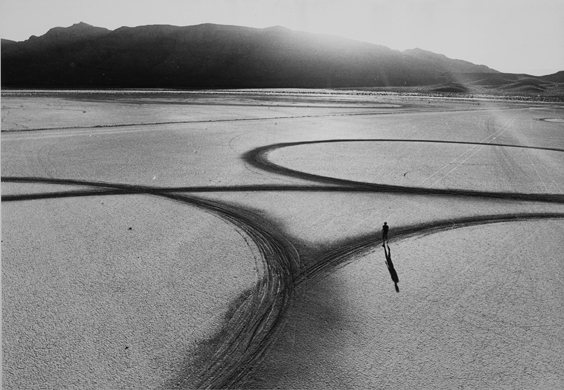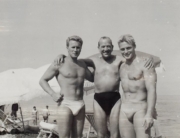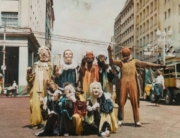
Michael Heizer’s Circular Surface, Planar Displacement Drawing, 1969 (Gianfranco Gorgoni/Getty Research Institute)
In the late 1960s, a handful of artists garnered attention for using land as both subject and material. Installation pieces featuring rocks and dirt started cropping up in galleries, and much larger works were created in remote areas of the American Southwest. Troublemakers: The Story of Land Art casts light on this moment in art history, with an elusiveness that mirrors the art itself.
Art critics offer two historical factors for the emergence of ’60s land art: the Vietnam War and the space program. The latter presented a new view of the earth as object, photographed for the first time in full view. The former was a terrible demonstration of man’s power over landscape, highlighted here by eerily beautiful footage of exploding bombs.
There were personal reasons for the work as well. Some artists were chafing against the restrictions of the art gallery or its surrounding social strata. They had ideas that could not be realized within four walls, and some had personalities that made it hard to schmooze. Robert Smithson, one of the major figures profiled, is described as “satanic” and “insane,” with an “apocalyptic nature” to his writing. His most famous work, Spiral Jetty, is an immense arrangement of stone and water with an “infernal” feel to it, according to Virginia Dwan, the movement’s most notable patron.
Dwan notes the common thread of obsession among the artists, telling a humorous story of a time when she, at a Smithson site, found herself sinking in quicksand. Not one of the artists present turned around when she cried out, let alone stopped their work. Michael Heizer started a piece called City in 1972 and is still working on it to this day.
Heizer’s Double Negative is discussed at length. Described as a kind of skyscraper in the ground, it consists of two gashes cut into the earth on either side of a canyon. For its full power, Dwan says, it must be experienced, not merely seen. In an archival interview, Heizer meanders through a metaphysical explanation of it, but what seems apparent is that words matter least in the face of it. Walking down into and through it is indescribable.
There was a rejection of commodity, even of aptitude, at work in the movement. Artist Lawrence Weiner, shown chiseling the plaster away from a gallery wall in 1969, happily explains that the piece he is making can be re-created by anyone at any time. The idea is the important thing.
On the other hand, there was clearly virtuosity in the men and women who propelled those ideas. Walter De Maria’s The Lightning Field, an installation of four hundred steel rods in the New Mexico desert, is as beautifully composed as it is thought provoking. Land art challenges everyone to see their surroundings differently, but not just anyone can see the art waiting to be unearthed from his or her surroundings.
Robert Smithson died in 1973 in a plane crash while scouting locations for a piece. Troublemakers ends nearly as abruptly, without devoting much effort to explaining the legacy of its subjects. Neither is a satisfactory explanation given to what trouble, if any, they actually created. But director James Crump manages to let land art cast a spell on the viewer, even while acknowledging mere photography cannot do it justice. As artist Carl Andre notes, referencing funeral mounds and the mysterious Stonehenge, “Earthworks are an older tradition than oil painting by about 3,000 years.” This is a worthy chapter covering their history.






Leave A Comment